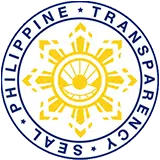Introduction
Education is a fundamental right for every child, and in the Philippines, the government ensures that students have access to quality education from junior high school to senior high school. In this article, we will delve into the educational system in the Philippines and provide a comprehensive guide to junior and senior high school education.
Junior High School
Junior high school education in the Philippines typically covers grades 7 to 10, and it serves as a transition period between elementary and senior high school. The curriculum is designed to provide a well-rounded education that focuses on developing students’ academic, social, and emotional skills.
Subjects in junior high school include English, Mathematics, Science, Filipino, Araling Panlipunan (Social Studies), Music, Arts, Physical Education, and Health. Additionally, students are exposed to Technology and Livelihood Education (TLE) subjects, which introduce them to practical skills such as cooking, sewing, and computer literacy.
At the end of junior high school, students take the Philippine Educational Placement Test (PEPT) or the Accreditation and Equivalency Test (A&E Test) to assess their readiness for senior high school or to obtain a Junior High School Certificate.
Senior High School
Senior high school education in the Philippines is a two-year program that follows junior high school. It aims to equip students with the necessary knowledge and skills to pursue higher education or enter the workforce after graduation.
The senior high school curriculum is divided into two main tracks: the Academic Track and the Technical-Vocational-Livelihood (TVL) Track. The Academic Track further branches out into specific strands, such as Science, Technology, Engineering, and Mathematics (STEM), Humanities and Social Sciences (HUMSS), Accountancy, Business, and Management (ABM), and General Academic Strand (GAS).
The TVL Track, on the other hand, offers specialized subjects that focus on developing technical and vocational skills. This track prepares students for immediate employment or entrepreneurial opportunities in various industries.
Senior high school students also have the opportunity to participate in Work Immersion programs, which allow them to gain practical experience in their chosen fields. This hands-on approach helps students apply their knowledge in real-world settings and make informed decisions about their future career paths.
Conclusion
Junior and senior high school education in the Philippines plays a vital role in shaping the future of students. It provides them with a solid foundation of knowledge and skills necessary for their personal and professional growth. By understanding the educational system and the various tracks available, students can make informed decisions about their educational journey and pursue their passions and aspirations.
Remember, education is not just about acquiring knowledge; it is about fostering critical thinking, creativity, and lifelong learning.

